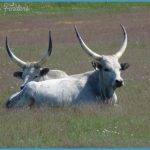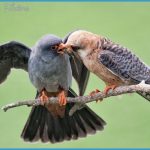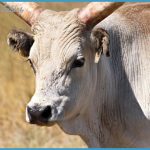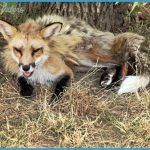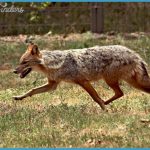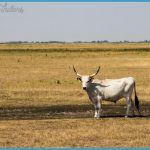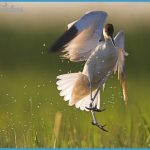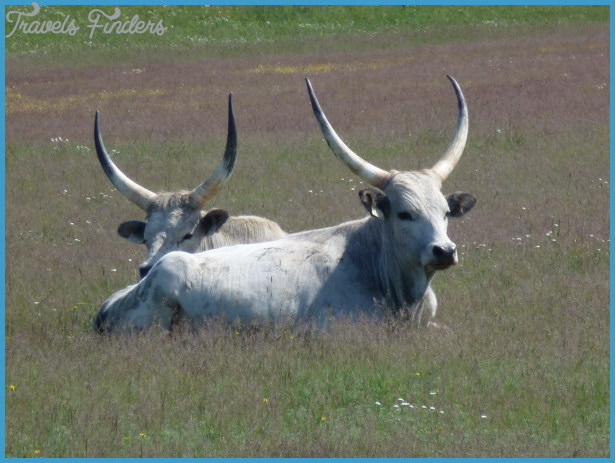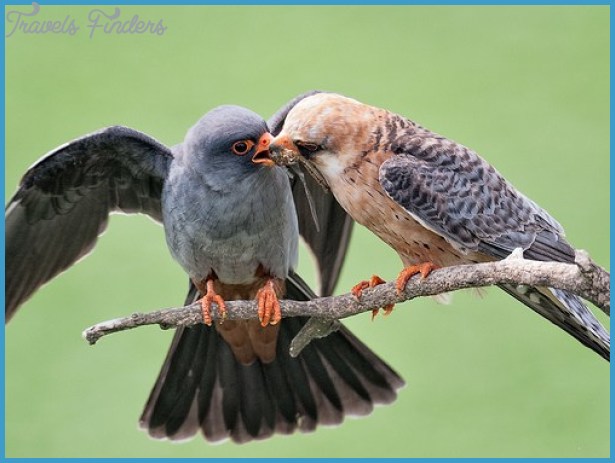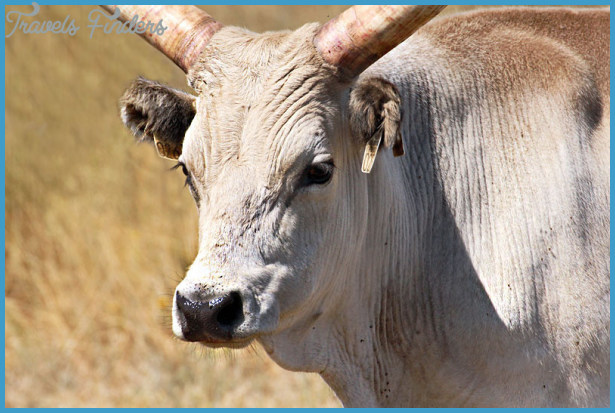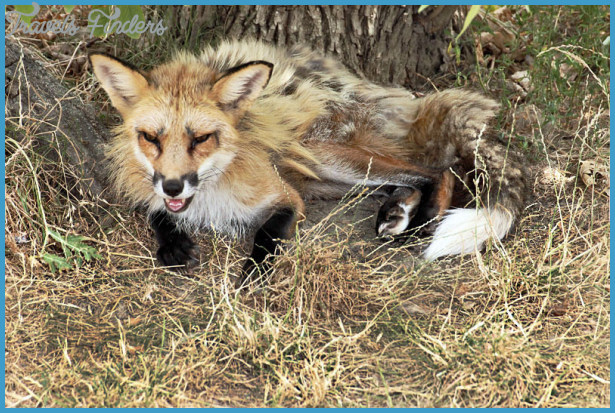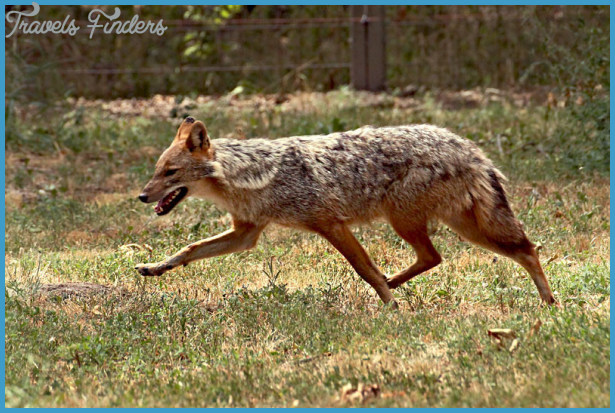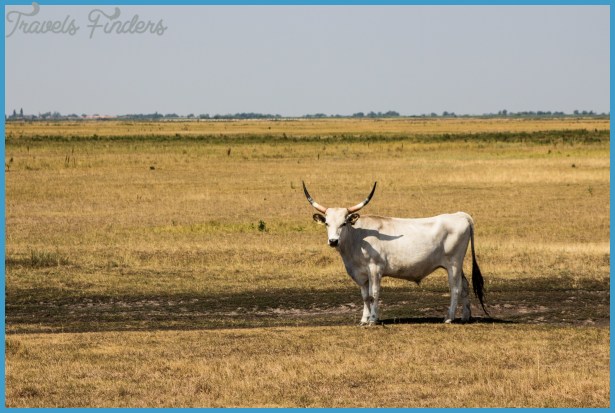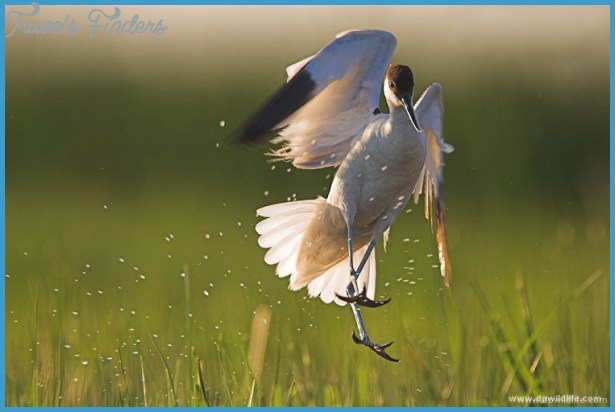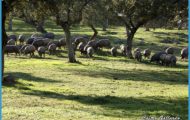Stepping Out on “the Steppey
As we walked along the rutted path, olive and brown striped frogs, from tiny to large, legs stretched out behind them like free-fall parachutists, dived headlong into the murky ditch water a couple of metres below. All we could hear was a rhythmical plop, plop’; it even drowned out most of the bird song around. It was as if someone had fired the starting pistol for a staggered amphibian Olympic swimming final.
Most summers in the Hortobagy – the vast, pancake-flat plain or puszta (meaning bare’ or bereft, though in reality it’s neither) of eastern Hungary – the heat keeps the frogs slouching in the cooler water, croaking with tubercular grunts. It can be so hot that atmospheric tricks cause mirages of inviting blue water to appear here, shimmering on the sun-bleached grasses of the crispbread plains. No mirages for us. We saw the real thing: too much rain. Shallow pools of mucky water dotted the flower-speckled landscape. Most afternoons we were grateful for the occasional plum tree. Not just to gorge on the free fruit, but for shelter from the thundery downpours. It was why the frogs were content to lounge in the damp vegetation; they had no need of total immersion.
Wildlife Travel To Hortobagy Photo Gallery
The puszta is a wide open landscape where it’s easy to imagine that there’s no protection when winter sets in and an incredibly icy wind blows from yet further east. It was less easy to imagine the baking hot summers with no shade from the glare of the East European sun except in the summer I was there. Much of the puszta, 800 km2, though that’s not all of it, was designated a national park in 1973 but not solely for its wildlife or because it’s the largest fairly natural area of flower-rich grassland in lowland Europe. The puszta is of equal importance for its folklore and cultural history. And I was here in 2004 to write a travel feature about the area for The Independent.
It used to be reckoned that these grassy plains must have been created when extensive forests were felled, perhaps in the Middle Ages, and the whole land put over to grazing livestock. But more recent evidence suggests that it’s much older still, dating from the last Ice Age 10,000 years ago when, with the ice retreat, the land remained treeless due to the grazing of wild animals and the Tisza River forming wetlands too marshy for trees to grow in. Most of the wild grazers were gradually killed off and replaced with sheep and cattle as humankind exerted its increasing influence, introducing special breeds to withstand the rigours of such a climate.
But the puszta isn’t all grassland, coloured – especially in spring – with a generous assemblage of flowers; it is also dotted with numerous fishponds, many small but several of them really quite large. They were dug mainly during World War I to cultivate fish as a protein-rich food that local people needed badly. There are plenty of fish in them today too and the margins of many sport reedbeds and other marsh vegetation where Great Bitterns lurk, those long-necked heron-like birds known for their curious, far-reaching springtime courtship calls. Always described as booming’, this peculiar sound, heard mainly around dawn and dusk, is more like the sudden deflation of a football or a sharp blow across the top of a large and empty glass bottle. It carries for maybe 2 km and although it’s never loud, it is an unmistakable sound. Not surprisingly, the fishponds I saw were full to the brim with water, their beds of man-high reed alive with the rattling, vibrating – and rather monotonous – songs of Savi’s Warblers and the twanging calls of baby Bearded Reedlings.
These are two birds that couldn’t be more different. Savi’s is a plain reddish-brown and cream warbler, skulking in the reeds except when the males are singing to secure a mate. And that monotonous, mechanical, insect-like reeling reminiscent of a cricket calling on a hot summer’s day – and rarely stopping – could have been designed to drive someone to despair. Though presumably not a female Savi’s Warbler who must think the most monotonous and persistent buzzer she can hear is the most macho and the best mate she could possibly have. The Bearded Reedling or Bearded Tit is a much showier chap; deep straw/orange-brown in colour with a long tail, a grey head and impressive black moustache markings down the face (though the female, obviously, lacks the moustache). They are drop dead gorgeous. Always on the move, they have a range of twanging and chirping calls, sometimes hard to locate but not in the least monotonous. But these two birds do at least have something in common; they are both often very difficult to spot in swaying reeds.
Incredibly, a third of the Hortobagy National Park – still the most impressive part of the Hungarian puszta – consists of fishponds and the extensive reedbeds that have grown up around them. Some, like those at Hortobagy-halast, with its ancient, nine-arch river bridge much visited by tourists, have hides or viewing platforms to look out over them. It may sound obvious, but with reeds too tall to see over, and 25 km2 of reedbed and ponds just in this one place, it’s important to try to keep a sense of direction if you want to return to where you started. For someone with a generally poor sense of direction like me, that was pretty well essential.
And what a profusion of wildlife they reveal for anyone equipped with binoculars on one of the platforms. Flotillas of ducks, including the chestnut-coloured
Ferruginous Duck, swim by, occasionally diving in the shallow waters to find bottom-living invertebrates to savour. This is a duck confined to eastern and southern Europe, commonplace here. Now and again I managed to spot a svelte black and white, aptly named Black-crowned Night Heron perching motionless at the edge of the reeds waiting to plunge its beak into the murky water and pierce a small fish or frog. Usually making an appearance around dawn and dusk, and more active at night as their name suggests, these herons were out in full daylight. Lined up on some dead branches in the reeds were a group of jet-black Pygmy Cormorants with their characteristic brown heads, resting I presumed after a spot of successful fishing. Birds of Eastern Europe and Asia, they are half the size of the cormorant common in the UK and most of Western Europe.
Out on the vast, flat puszta you no longer see long-cloaked cowboys – csikos riding their horses to round up herds of the rather odd-looking, but traditional corkscrew-horned Racka (pronounced ratchka’) sheep. Today’s csikos wear jeans though it’s possible to see them dressed up in their finery in the more touristy spots where you can hire horses and do some riding with them if you feel confident enough. Traditionally, though, they wore black, high boots; ornately buttoned, blue waistcoats; black, tricorn hats and long flowing, pleated skirts (again, blue) worn over their breeches, an operatically flamboyant outfit that gives every impression of being a tad impractical. Nevertheless, that was their traditional garb. These days I’m sure they’re relieved to sally forth in a pair of comfortable jeans.
But the csikos did, of course, have well-honed survival skills out here where sudden thundery downpours of cold rain could bring on hypothermia in less time than it takes to round up a few Rackas. To keep dry under such conditions a csiko would sit his horse down and tuck himself in underneath its stomach between its front legs as if in a sentry box to shelter from the fierce puszta rain storms.
The first Rackas I saw, pale brown in colour, were pretty startling. Both the males and females have a pair of outward pointing spiral horns, I suppose about 60 cm long. They are the only breed of sheep in the world with such horns. What use they are to the animals I have no idea; what I do know is that this is a hardy breed (it has to be here) and they are kept for milk as well as for their wool and meat.
More interesting still are the traditional creamy-white, retriever-like Puli sheepdogs and their huge cousin, the Komondor. Pulis are usually black but the examples I saw on the puszta were always creamy white for some reason. Standing just 40 cm high, they are the canid version of a Rastafarian. With deeply matted floor-length hair enveloping them from head to toe, it isn’t until they bark that it’s obvious which end is the front. Trained for herding and protecting the Racka sheep, they need to be cosy and warm in winter, and waterproof when it pours with rain. The Puli is an ancient sheepdog breed introduced here by the immigration of the

